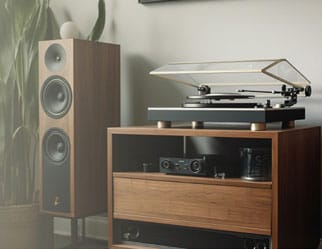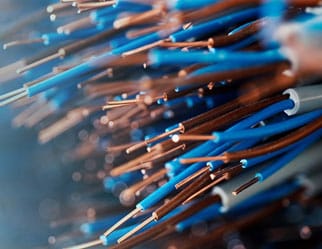
- Home
- /
- Articles and Resources
- /
- How to Choose and Install a PA System
How to Choose and Install a PA System
From businesses and schools to churches and music venues, Public Address (PA) systems are the go-to solution for amplifying sound to audiences or building guests. These systems, typically comprised of microphones, amplifiers, loudspeakers and related equipment, ensure clear and effective communication or immersive entertainment experiences when installed properly.
Knowing how to install a PA system is important not just for AV integrators. Security installers who expand their skillset to include PA systems can earn sizeable revenue from such projects. Recurring revenue may also be earned through the maintenance of such systems. Some customers may also need their PA systems integrated with other security or building management systems, providing an additional opportunity for revenue.
How to choose what kind of PA is needed
The performance of any PA system will be influenced by a multitude of factors, which is why it's important to ask questions and properly scope the project. To help you determine the best setup for your customer's space or building, we have outlined the most important factors to consider when creating an optimized PA system.
Use: First and foremost, what is the primary use for the system? Will your customer need to amplify speech, music or both? Different applications require varying frequency responses and speaker configurations. For example, a horn speaker is ideal for speech, but not suitable for music.
Audience and room size: Consider the audience and room size as well. This will help determine your speaker coverage, type and where they should be placed. Larger audiences and open spaces, for example, require significantly higher wattage and greater speaker dispersion. Having more speakers at a lower volume is preferable to having fewer speakers at a greater volume, because it results in the sound spreading more evenly.
Sound reflection: Another factor to consider is reflectivity, or sound reflection. If a speaker is placed near a reflective surface like a brick wall, the sound coming from the speaker and the sound being reflected from the wall can reach the listener at different times, causing cancellation. When setting up loudspeakers in a reverberant space, be sure to point your speakers towards the middle of the room and away from reflective surfaces.
Fixed or portable: Lastly, be sure to find out whether your customer's solution will need to be fixed or portable. A single-musician setup for a small room will require components specifically designed for mobile setups as compared to a large-scale music venue or a school that needs a fixed, robust solution.
What are the components of a public address system?
Perhaps the most critical element when it comes to sound transmission, loudspeakers carry audio to the masses. The three main types of PA speakers — main speakers, subwoofers and stage monitors — are interdependent and each serve a different function.
Main speakers are responsible for a PA's sound, and they come in a variety of forms including ceiling, wall, standalone, surface, flush mount or indoor and outdoor. The space will help dictate what type of speaker you need. Subwoofers allow the system to run more efficiently because the low frequency content is reproduced by the subwoofer instead of the full-range system. And stage monitors help the speaker or performer hear themselves.
Yet another critical element, amplifiers convert the line level signal from a mixer and bring the sound to a level where it can adjust the speaker to the right volume. An amplifier can be added on or you can purchase active speakers, which have an amplifier of their own. Passive speakers, on the other hand, don't have an internal amplifier.
Mixing consoles, or mixers, are somewhat like the brains of a larger system. With a set number of channels, mixers are responsible for combining sounds, routing, volume adjustment, tone and the dynamics of audio signals. Some mixing consoles have onboard power amps, which eliminates the need for a separate amplifier.
When dealing with complex installations or larger rooms, consider a DSP, or a digital signal processor. This will help guard against echo and reverberation. DSPs can also automate the prevention of feedback, a very common challenge in PA setups.
Last but not least are microphones. While dynamic mics are ideal for speech, condenser mics excel in capturing nuanced sounds like music, ambiance or sound effects. Consider wireless mics for convenience or when presenters need to be mobile while on stage.
How to install a PA System
Because PA systems are used for a wide variety of purposes, each configuration will need to be unique to your customer. As a result, we'll cover the basics you need to know when installing a PA system.
The first step in setting up a PA system is to determine the layout of your setup. You'll want to consider speaker placement, mixer location and cable pathways before you get started. It's critical to ensure that you can run cables where necessary, so be prepared to adjust as there will be challenges in most spaces.
Ultimately, your goal is to place the speakers in a location that enables all guests to hear the audio without feedback. While a DSP can help automate feedback prevention, placing the microphone behind the speakers will help as well. However, in larger installations a DSP is ideal as it removes the need to coach your speaker or musician where to stand to prevent feedback.
You'll also want to consider the placement of the mixer. Typically, a mixer is staged right in the middle of the audience so that the sound engineer can hear what the audience is hearing and adjust as needed. In many cases, that may not be possible due to the construction of the room and the best placement is off to one side of the stage. This also eliminates the need to run cables to the middle of the room.
Now you can begin connecting components and you'll want to start with the outputs. Start by connecting the microphones to the mixer using XLR cables. Ensure each microphone is plugged into a different channel. Next, you'll connect the mixer to the amplifier using the appropriate cables according to the manufacturer's instructions. Using speaker cables, you'll then connect the amplifier to the speakers.
Now, you'll want to fine tune your setup. Gradually turn on the system by increasing the volume at a low level on each component. Speak into the microphone and adjust the gain on the corresponding channel of the mixer in order to achieve clear sound without any feedback. Next, you'll perform a soundcheck by playing audio and use the mixer's equalizer to adjust the sound to your customer's preference.
Conclusion
Installing a successful PA system requires careful planning and equipment choice. By understanding your customer's needs, selecting appropriate components and following best practices, you can ensure clear, impactful audio that engages the audience and amplifies messages effectively.


